
Motorola’s adjustments to the Razr 50 Ultra take what was good in the Razr 40 Ultra – and make it even better.
| Pros | Cons |
|---|---|
| More powerful than the Razr 40 Ultra | Only 3 years of OS upgrades |
| Larger external display works well for more apps | Water resistance higher, dust resistance MIA |
| Telephoto camera is a smart inclusion | I’m never going to like Vegan leather, and you can’t make me |
Score: 4/5
Support the independent tech journalism I’m doing
by buying the Razr 50 Ultra through the link below!
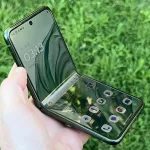 |
Buy The Motorola Razr 50 Ultra! | Buy On Amazon |
In this review
Motorola Razr 50 Ultra Specifications
Motorola Razr 50 Ultra Design
Motorola Razr 50 Ultra Performance
Motorola Razr 50 Ultra Battery
Motorola Razr 50 Ultra Conclusion
The Motorola Razr 50 Ultra (AKA the Motorola Razr+ in some markets) is, not surprisingly, the successor to the Motorola Razr 40 Ultra, the phone that finally convinced me that flip foldables were worth getting excited about.
That didn’t mean that the Razr 40 Ultra didn’t have its flaws. Compared to Samsung’s contemporary Galaxy Z Flip5, it was slightly underpowered, and its cameras left a little to be desired for its premium price.
The short form here is that the Motorola Razr 50 Ultra goes a long way to solving those problems, adding a current-generation processor and a big improvement in camera features to make it a considerably more compelling prospect.
Also read:
Motorola Razr 40 Ultra Review: Exceptional
Samsung Galaxy Z Flip 5 Review: Split Decision
Side thought digression: The Motorola Razr 50 Ultra is the Razr+ in the US (and possibly other markets), which must be hellaciously confusing, because that’s the same name Motorola gave the Razr 40 Ultra. I don’t know why they do this, but then that’s probably why I don’t work in marketing.
Design
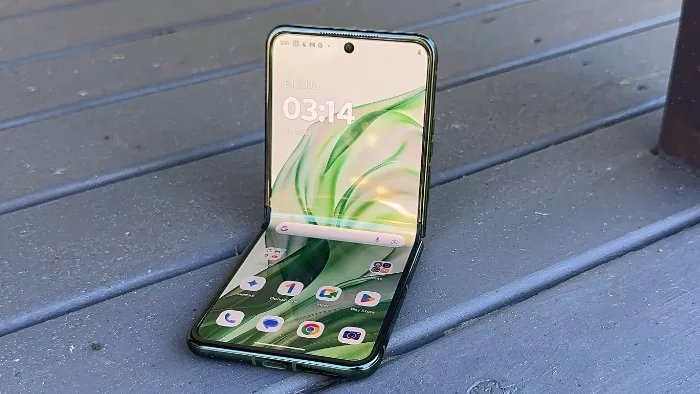
Like the Motorola Razr 40 Ultra before it, the Razr 50 Ultra is a flip phone built around a larger internal display – specifically a 6.9 inch 1080x2640 pixel 165Hz capable display that’s unchanged in size from last year’s model.
As with any foldable phone, there’s a crease in the middle, and I may be imagining it, but it feels just a tad “flatter” than last year’s model did from memory. It’s not that you’ll never notice it if sliding across it, but it does feel that year on year, folding phone makers have managed to make screen creases less and less of an issue.
The internal screen hasn’t seen massive changes, but that’s not true on the outside, where the external display – that’s the one that you see when the phone is folded down into its 73.99 x 88.09 x 15.32mm closed size – takes up nearly all of the external display, with a 4 inch, 1080x1272 pixel 165Hz capable display.
You do lose a corner of that 4 inch display to the external dual camera lenses, though whether that’s going to affect your app experience will vary by app – more on that later. Comparatively, the Galaxy Z Flip6 only has a 3.4 inch external display at a lower resolution – much less compelling.
The visual design of the Razr 50 Ultra still leans a little into the classic Razr style, with rounded corners across the whole body of the phone, and your choice of three colour styles in Australia; Midnight Blue, Peach Fuzz or Spring Green, which is what Motorola sent my way for review. There is a fourth colour – Hot Pink – but Motorola’s not going to be offering that one for the local market.
The colour choices are fine, but all of them are wrapped in “Vegan Leather”, and if you’ve read any of my reviews previously you’ll know I’m not a fan in any way at all of the tactile feel of Vegan Leather, which is just a fancy marketing name for “soft plastic” when it boils down to it.
You do get a colour-matched case in the box with the Razr 50 Ultra, but it’s just an externa side bumper case, not a full coverage case. If the Razr 50 Ultra was going to be my daily driver, I’d look into a full coverage case just to get away from the feel of vegan leather, though I freely admit this 100% might just be a personal hangup of mine, and your perspective may vary.
One of the bigger questions around foldable phones concerns durability over time, especially as it relates to water and dust ingress. Here Motorola’s made a change that’s technically better, but that I feel is something of a downgrade.
The Razr 50 Ultra is rated as IPX8, compared to the IP52 rating of its predecessor. That does mean it’s considerably more water resistant, capable of surviving immersion in water – clean lab water, specifically – and that’s a plus, right?
Also Read
Why your waterproof phone isn’t actually “waterproof” the way you think it is
My issue here is that most of us don’t spend large quantities of time dunking our phones into water, but dust gets everywhere, and the Razr 50 Ultra has no stated dust resistance whatsoever, where its predecessor was notably tougher in that aspect.
It’s maybe a marginal thing, but I figure that a phone that can stand up to both water and dust is going to be more durable in the long term than one that’s just resistant in both. It's also notable that in this respect, Motorola’s behind Samsung’s position on durability – the recent Flip6 and Fold6 phones are IP48 rated.
Camera

The Razr 50 Ultra features twin “rear” cameras and an internal “selfie” camera, though those terms get all kinds of muddled when you’re talking about foldable phones simply because the nature of their folding means that the phones at the back might be the ones you’re staring at from the front when it is folded up, while the selfie camera in that situation is entirely inaccessible.
That’s the same arrangement as its predecessor in terms of lenses, but Motorola’s made the decision to shift from a 12MP wide/13MP ultrawide and 32MP selfie in the Razr 40 Ultra to a 50MP wide/50MP 2x Telephoto at the front, while retaining the same 32MP sensor for the selfie camera.
This essentially poses the question as to which is more valuable and important to you; wider panoramic shots on the go, or telephoto zoom?
I’d argue that the zoom is an upgrade, and not because it’s a higher megapixel sensor, but simply because it’s a zoom, period. If you want that ultrawide experience you can always somewhat fake it with a panoramic shot, but digitally cropping for zoom has always been a lossy game. Moreover, flip phones like these really do sell on that personal style level, which lends itself more to zooming in on friends, pets or at concerts than wider shots will.
But how well does that zoom actually function? It's decent, though predictably less so if you push too far beyond its 2x optical level.
As an example, while it's not the best shot artistically, here's a sample photo taken with the main wide lens of Sydney's Centrepoint Tower:

At 2x zoom, I can get a decent image, albeit a little darker:

At 4x zoom, it holds together OK (though the light isn't helping me any; these are just non-adjusted camera samples but I'd definitely want to tweak a little in post processing if I was using these):

You can push the Motorola Razr 50 Ultra's zoom to 30x... but you shouldn't.

That being said, the same observation I’ve hit with folding phone cameras for years now still applies, and that’s the fact that for their price, they’re still only capable cameras, not the best you can get at this price point.
Razr 50 Ultra Sample Photos




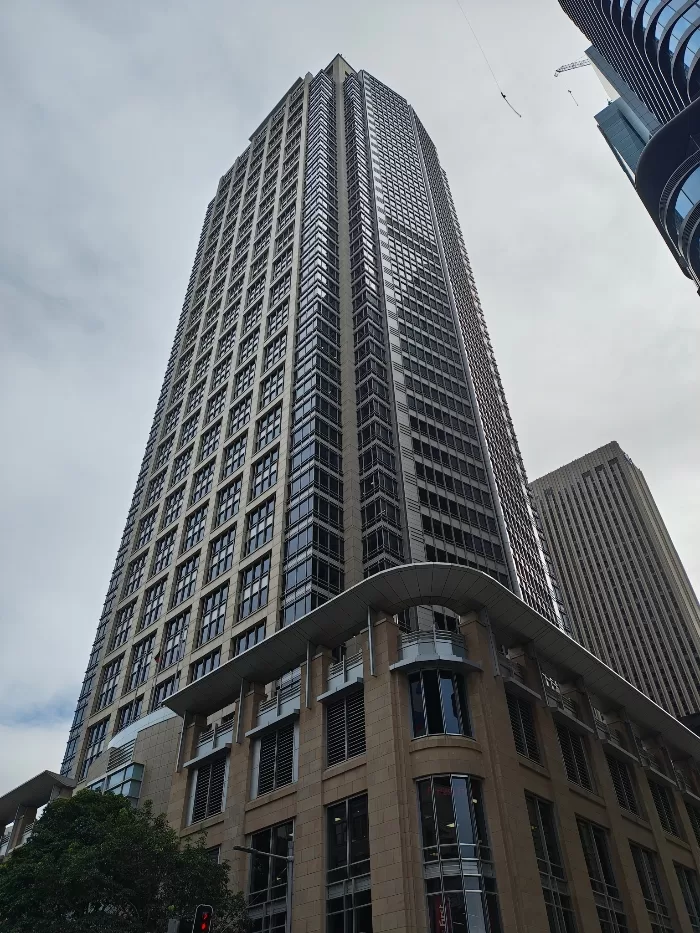


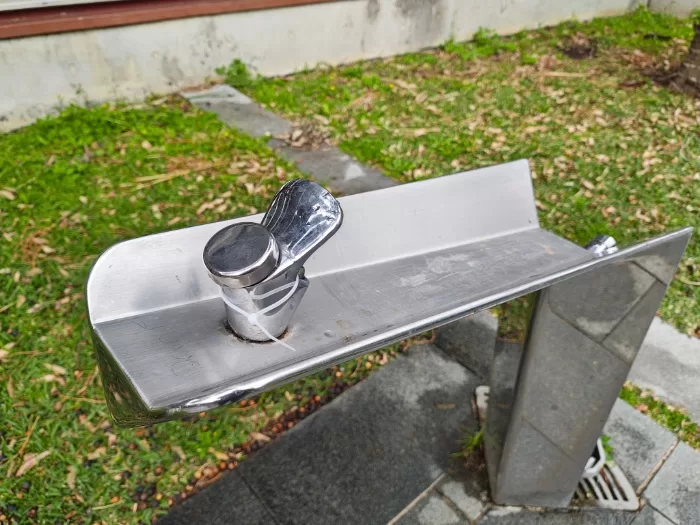
Performance

One factor that slightly held the Razr 40 Ultra back in the flip phone stakes last year was Motorola’s decision to use a much older Qualcomm flagship processor relative to the Galaxy Z Flip5.
Motorola’s made upgrades in this department for the Razr 50 Ultra, though not quite to the cutting edge of processors right now.
It features a Snapdragon 8s Gen 3, paired up with 12GB of RAM and 512GB of internal storage for the Australian model; a full “flagship” model would ideally be packing in a full Snapdragon 8 Gen 3 instead.
The end result is a faster phone than the Razr 40 Ultra was, but not the fastest you can buy. Here’s how the Razr 50 Ultra compares using Geekbench’s CPU test:
Samsung has long claimed that its “Snapdragon for Galaxy” processors are extra souped up compared to the rest of the market, and that can be seen with these scores. It’s a similar story when we look at GPU performance too:
Spoiler: Galaxy Z Flip6 review coming soon, as if that wasn’t obvious.
So that makes the Razr 50 Ultra a dud, then?
Not at all; the reality here for everyday use (and I made this comment last year when reviewing the Razr 40 Ultra too) is that flagship phone processors are supercar engines for most people, more than capable of flinging data around at dizzying speeds for just about any app you’d care to throw at it.
The Razr 50 Ultra might not be the fastest benchmarked phone, but it hasn’t missed a beat at all during my review period.
While it might lose out to the Z Flip6 in a straight line benchmark test, one area where the Razr 50 Ultra utterly dominates is in the use of the external display. This isn’t just a size contest, but a utility one.
Motorola’s default is to let you use any Android app on the external display once you add it to the display, with options for continuous use between flipped and full display in play as well. You can do this with a Z Flip phone, but it involves a third party app launcher, rather than being inbuilt.
Moreover, the 4 inch screen makes more apps actually usable this way, with some – probably not all, I can’t test every single one of billions of Android apps – intelligently placing themselves around the cameras to enhance usability. It’s a big plus for a phone where the selling point is that you’ll have it folded up in your pocket to be able to do a lot more natively with that external display.
Though I guess some might see it as an issue if you wanted a folding phone to avoid distractions, because there’s nothing you (technically) can’t do on that external display. If you were looking to escape your doomscrolling social media habit on the Razr 50 Ultra, the way to do that would be to explicitly not enable the external display for those apps.
Motorola’s made some noise about the implementation of Google’s Gemini AI on the Razr 50 Ultra, and… yeah, it’s present, and it works as well as Gemini does anywhere else, more or less. I’m not yet sold on AI on phones bringing particularly life-changing experiences to the way that I use my phone, but maybe you differ.
Motorola’s track record when it comes to Android updates hasn’t always been best in class, and I’d love to say that it’s catching up (or at least matching) Samsung in the upgrade stakes… but it isn’t. The Razr 50 Ultra comes with 3 years of OS upgrades and 4 years of security updates, which isn’t nothing – but it’s well below the 7 years you get with flagship Samsung foldables right now.
Battery

Flip phones are the one area where you don’t see the typical 5,000mAh battery arrangement found in so many Android phones. That’s because the nature of including hinges and flexible screens leaves slightly less space for batteries in these kinds of phones.
The Razr 50 Ultra does get a battery boost over the Razr 40 Ultra, jumping 200mAh up to 4,000mAh stated battery capacity, rechargeable via either USB-C or Qi wireless. Annoyingly there’s no sign of Qi2 on the Razr 50 Ultra, so the wait for a magnetically attaching wireless charging phone continues.
4,000mAh is on the larger side for a foldable phone battery, and I was keen to see how the Razr 50 Ultra was going to measure up in battery endurance tests. It’s long been an area where Motorola’s foldables have had a notable advantage over their Samsung equivalents.
The Razr 50 Ultra did not disappoint. Here’s how it compared using my standard YouTube battery test:
The Razr 50 Ultra’s battery endurance is really good, and, while like any phone you can absolutely run it flat if you’re a really heavy user, you’ve got to be pushing it quite a bit not to make it through a day’s power usage.
Motorola Razr 50 Ultra: Alex’s Verdict
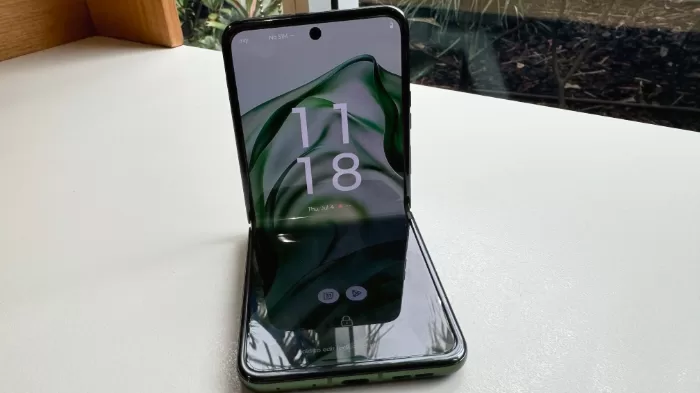
The Motorola Razr 40 Ultra was my favourite flip foldable last year, which meant that the Razr 50 Ultra had big shoes to fill.
I’m known as a harsh critic – a badge I wear with some pride, because no tech company “deserves” your business, ultimately, and fawning over companies isn’t my style – but the Razr 50 Ultra really does improve in key ways over its predecessor, making it a real contender in the premium flagship space.
As should be evident, I’m in the middle of working on my Galaxy Z Flip6 review at the time of writing this review – and may come back and revise depending on my end conclusions there – and at least locally, there’s no announced timeframe for when we’ll see the cheaper Motorola Razr 50 either.
But right now, if you want a foldable flip phone, the Razr 50 Ultra is the one to buy.
Motorola Razr 50 Ultra: Pricing and availability
The Motorola Razr 50 Ultra retails in Australia for $1699 outright.
Support the independent tech journalism I’m doing by buying the Razr 50 Ultra through the link below!
 |
Buy The Motorola Razr 50 Ultra! | Buy On Amazon |
Was this review useful to you? Support independent media by dropping a dollar or two in the tip jar below!





